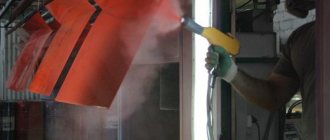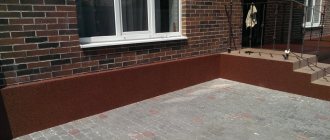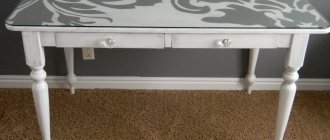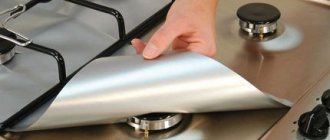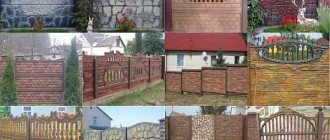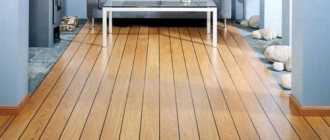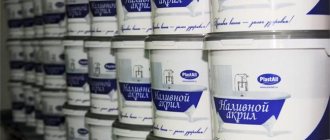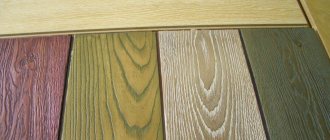Under what conditions can metals be painted without stripping?
A typical pre-treatment process for metal surfaces consists of stripping, passivation (primer with a special composition) and painting. Usually, rust is removed to the “living” layer, but when carrying out large-scale or specific work, this is not always acceptable (for example, when painting a ceiling or bathroom).
There are two main criteria that determine whether it is possible to paint over rust, or more precisely, whether it will be more rational from a technological and economic point of view:
- Degree of damage. This includes the thickness of the rusty layer, as well as the density of the scale and the strength of its adhesion to the main surface;
- Form of plaque formation. Uniform distribution and dust-like structure provide sufficient conditions for reliable adhesion of the paint and varnish coating to the base and the formation of a protective barrier. Porosity, the loose nature of rust, the presence of scale and delamination determine the need for additional mechanical cleaning, as well as the use of special products.
Uniform distribution and dust-like structure provide sufficient conditions for reliable adhesion of the paint and varnish coating to the base and the formation of a protective barrier.
Requirements for paints
It should be understood that painting rusty metal does not occur in the same way for all possible cases and conditions. The operational load, the impact of the external environment, its chemical composition, as well as the frequency of preventive maintenance will determine the requirements for the composition of paints. It is desirable that they satisfy the following:
- Formation of a universal insulating layer. Most often, it is necessary to exclude contact of a metal surface with water, nitrogen and sulfur oxides in industrial areas of large cities, as well as from exposure to chloride ions in coastal marine areas, where the atmosphere contains a large amount of salt compounds;
- Rust modification. The composition of the coating must change its chemical composition to stop further corrosion;
- Presence of inhibitors. For particularly aggressive environments, special components are added to the paint to prevent the continuation of chemical reactions already under the protective film.
The composition of the coating must change its chemical composition to stop further corrosion.
Types and characteristics of rust paints
In fact, painting rusty metal with your own hands requires an understanding of the oxidative processes occurring on the surface of the metal, as well as an assessment of the conditions in which the structure being painted will be located. All types of special paints differ in the mechanism of protective action, drying speed, number of layers applied, consumption, estimated service life of the structure, and even in the environment (atmospheric, heat-resistant).
The choice of composition must be made taking into account all operational requirements and existing characteristics:
- Method of preparation for painting;
- Type of binder;
- Type of coating: glossy, hammer and semi-gloss;
- Providing barrier protection (mechanical insulation, preliminary passivation, cementation). The choice of what to paint metal outdoors with depends on the properties of the rust and the depth of the layer;
- Thickness of the hardened (dry) layer;
- Paint consumption;
- Recommended application method;
- Paint fastness;
- Price.
Compositions containing aluminum powder (silver) have the greatest protective properties. This pigment alone helps to increase the reflectivity of the surface, which allows you to raise the permissible temperature limit by 5-10 degrees.
Compositions containing aluminum powder have the greatest protective properties.
Painting gas pipes
Painting gas pipes is necessary to protect them from corrosion. In addition, according to safety rules for gas distribution systems, industrial gas pipelines must be painted a certain color, namely yellow. It is not necessary to paint gas pipes inside residential buildings and apartments yellow.
Painting gas pipes
The following paints are used for painting gas pipelines:
- alkyd enamels;
- two-component epoxy paints;
- dispersions of zinc and aluminum powder in varnish;
- polyurethane paints.
When removing old gas pipeline coatings, heat should not be used. Clean the surface using a wire brush. We thoroughly remove rust and old paint. After this, degrease the surface of the pipe. This can be done using a rag soaked in gasoline or solvent. After that we start painting. It should be started no more than 6 hours after stripping. Otherwise, a new layer of rust may form on the surface. First, use a brush to apply the first layer of paint. Then we wait a certain time for the surface to dry and apply the second layer.
The difference between rust paints and regular metal paints
For structures with complex shapes or highly labor-intensive work (roof, bathtub, loader arm), it is best to use multi-component compositions of the “three in one” type. They are able to modify rust particles when applied, while simultaneously covering the pores and forming a protective layer.
The approach of “however to paint the iron so that it doesn’t rust” is extremely contraindicated here! Such paints are more expensive, but have a number of undeniable advantages:
- Allows you to protect an already affected area of metal;
- The finished coating has high performance characteristics - it does not allow water to pass through and does not retain dirt;
- Processing quality. High adhesive properties and uniformity of the layer show that before painting metal outdoors, it is not necessary to clean it until it shines;
- Durability. On average up to 10 years (harsh winters and frequent rains can shorten this period).
For structures with complex shapes or highly labor-intensive work, it is best to use multi-component compositions of the “three-in-one” type.
How to paint a sewer pipe. Sequence of work
Over time, sewer pipes become depleted, wear out, and lose not only their aesthetic appearance, but also their functionality.
In this case, it is necessary to either completely change the sewer system or renew old pipelines. Of course, repair work will be cheaper, and in some cases this solution can extend the service life of the sewer system by more than one decade. One of the simplest and most effective ways to repair a sewer pipeline and refresh its appearance is simple painting. But often owners do not know how to paint a sewer pipe correctly, what tools are needed for this, or what compounds to use.
Painting is especially important in an apartment where cast-iron pipes are not of the first freshness. Metal, as a rule, tends to corrode. It literally eats up the material, causing leaks and breakthroughs. Paint solves two problems at once - it renews the aesthetic qualities of the pipeline and fights corrosion.
Compositions for painting cast iron pipes
The choice of product for painting cast iron sewer pipes must be carefully considered. Any paint will not work here. If you choose the wrong composition for painting sewer pipes, over time the layer may peel off, fall off, or collapse. Most often, the following types of paints are used for painting pipes:
Pipeline coloring agent
- Alkyd paint provides high quality painting of pipe surfaces. Its main difference is that the paint layer does not fall off when exposed to high temperatures. Some products can withstand temperatures up to 1000 degrees.
- Water-dispersion paint refers to compositions that retain their technical properties for a long time. The main advantages of the paint are its environmental friendliness, quick drying, and durability.
- After painting a sewer pipe with acrylic paint, an attractive gloss remains on it. The paint contains only natural solvents. The enamel is resistant to fading and does not crack over a long period. The disadvantage of paint is that it does not adhere well to the surface of the pipe, so before applying a layer of paint, the pipe should be thoroughly primed.
- Sometimes oil paints are also used, however, it is worth considering that they can lose their attractive appearance over time, turn yellow on the pipes and gradually crumble.
Note! Before painting a sewer pipe, its surface should be carefully prepared.
How to paint plastic pipes
Plastic pipes have certain features compared to cast iron products. They have a very smooth surface. On the one hand, this is an advantage, since the smooth surface does not allow sediment to accumulate inside the pipe. Some types of pipes cannot be painted at all. Polyethylene and polypropylene pipes can be painted, however, the paints crack and darken.
Painting plastic pipes using spray paint
So, how to paint a plastic sewer pipe? The coloring agent must be selected taking into account the following requirements:
- organic composition;
- the paint must dry in less than 12 hours (drying time is indicated on the label);
- layer hardness and color density.
Note! Plastic sewer pipes should be painted in rooms where the temperature fluctuates within +18 degrees.
Before you begin the painting process, you should carefully prepare the surface of the pipe. If it is an old cast iron pipe that has already begun to be damaged by corrosion, then you need to clean it with sandpaper.
Then the surface is degreased and a layer of primer is applied to it.
Preference should be given to primers with an anti-corrosion effect, this will ensure more reliable contact between the pipe and paint, and also prevent the progression of corrosion.
Preparing the pipeline for painting
You also need to prepare the tools and materials that may be needed during the work:
- paint for sewer pipes, selected taking into account the operational needs and technical characteristics of the pipeline;
- a bucket from which you could conveniently remove paint;
- several brushes of different sizes, preferably made of natural bristles;
- masking tape;
- primer;
- protective equipment (glasses, rubber gloves).
Note! It is much easier to work with pipes that are freely accessible. Certain difficulties may arise when painting sewer pipes in a bathroom or toilet, where communications are hidden from prying eyes.
Sequence of work
Painting sewer pipes can be done in two ways. You can paint over the old layer or completely remove it and paint over the surface of the pipe. The work should be performed in the following sequence:
- choosing paint for covering a sewer pipe from a wide range available in hardware stores;
- surface preparation, cleaning, removing the old layer;
Painting of cast iron thick-walled pipelines
- treating the pipe surface with a primer, which will protect the pipeline from corrosion;
- the surface of the pipe must be completely dry before applying a layer of paint, otherwise the paint will not adhere and will peel off soon;
- After the primer has dried, you can begin applying a coat of paint.
Note! It is necessary to paint the sewer pipe even in hard-to-reach places. To make the job easier, use brushes of different sizes.
Painting sewer pipes is an excellent solution for extending the life of pipes and improving their condition. You can paint a pipe to prevent the formation of rust on the surface. In this case, a protective layer is created that prevents damage to the pipeline by corrosion. The pipes can also be painted so that they fit well into the interior of the room.
Surface preparation
Despite the peculiarity of this type of coating, minimal processing is still necessary. There is no need to clean the surface only if the plaque thickness is small and the rust spread has a special nature (small spots reminiscent of baby powder). In other cases, before painting rusty iron, the outside of the structure is mechanically cleaned to remove scale and the old layer.
Hard-to-reach places (pipe, distant edge) can be treated with a solvent (especially if contaminated with oil or petroleum products) or, for large volumes of work, hydrocleaning (high-pressure water jet) can be used.
To clean a door, an iron fence and even a garage, a metal brush and sandpaper will be enough.
Before painting rusty iron, the outside of the structure is mechanically cleaned to remove scale and the old layer.
Application of primer
If we do not consider industrial priming methods, rust can be painted at home in two ways:
- The use of two-component paint, with pre-treatment with any passivating liquid, which includes phosphoric acid;
- Coating with a special primer for rust, followed by enamel (polyurethane or alkyd).
In the first case, the result will be more durable and resistant to corrosion, but will cost more. In the second, it will be cheaper, but you will have to repaint it every two to three years. Therefore, before painting rusty iron without treatment, you need to carefully weigh all the pros and cons.
Before painting rusty iron without treatment, you need to carefully weigh all the pros and cons.
Correct painting of heating appliances
When renovating an apartment, you often have to paint heating pipes. Many people don’t think about how and how to do this correctly. As a rule, any paint for work can be purchased, regardless of its characteristics and purpose.
Problems usually arise with this approach. In order to avoid certain difficulties arising after incorrect painting, you need to immediately do all the work correctly, using special paint. Before starting this work, it is necessary to prepare the surface of the batteries so that the color lasts for a long time and the paint does not crack. What do you need to know about painting heating pipes?
What paint should be used to paint heating appliances?
Choosing the right paint for batteries is very difficult. The market for this product is large, and only a professional can understand the characteristics of each type. If you have chosen a supermarket or large specialized store to purchase all the materials necessary for this task, you can seek advice from an employee.
In order not to pay extra and buy the necessary goods, you need to have knowledge in this area. Recommendations from store employees will be useful, but a lot depends on the choice of material, so it’s better to find out everything you need in advance.
Selection and application of paint
Home conditions also impose restrictions on the selection of the composition due to the method of applying it to the prepared structure. This also determines the consumption of material, which as a result may affect the choice of paint in favor of a cheaper option.
Most often, rust painting is carried out in this way:
- Paint brush;
- Roller;
- Aerosol can;
- Pneumatic spray.
Home conditions also impose restrictions on the selection of the composition due to the method of applying it to the prepared structure.
Decorating metal structures using rust paint
First of all, you should determine the type of metal surface, since the type of paint used depends on this: alkyd - for ferrous and galvanized metals, epoxy - for metal “working” in an aggressive environment. It is better to paint non-ferrous metals with colorless varnish.
Before you paint the rust, you should decide on the order of work. A typical sequence looks like this:
- Surface cleaning;
- Padding;
- Coloring.
The paint is applied in several layers. Here it is necessary to fulfill the condition of observing the time period between passes (no more than 8 hours), otherwise the coating will begin to polymerize and work can be resumed only after two weeks.
The paint is applied in several layers.
The durability of metal structures, as well as their vulnerability to the negative effects of the external environment, greatly depends on the choice of paint used. Therefore, you should carefully choose what to paint over rust in order to permanently eliminate the risk of corrosion.
How to choose paint?
The final result of your work depends not only on how the paint is applied to the metal, but also on how high quality it is and how suitable it is for such work. Paint for heating pipes must meet the following requirements:
- heat resistance from 100°C;
- resistance to abrasion and aggressive cleaning agents: pipes and radiators have to be washed quite often;
- non-toxic: during the heating process, the paint coating should not release odors or harmful substances into the air.
Types of paints
Today on the market you can find paints with different component compositions.
Acrylic enamels are produced on the basis of organic solvents, so painting pipes is inevitably associated with an unpleasant, pungent odor. However, the result will be a durable glossy finish that will retain its integrity and attractive appearance for a long time.
Alkyd paints are also in great demand for transforming pipes and radiators. Their downside is the pungent odor not only during the painting process, but also during operation. But the layer turns out to be really durable. Alkyd paints are distinguished by a richness of shades.

